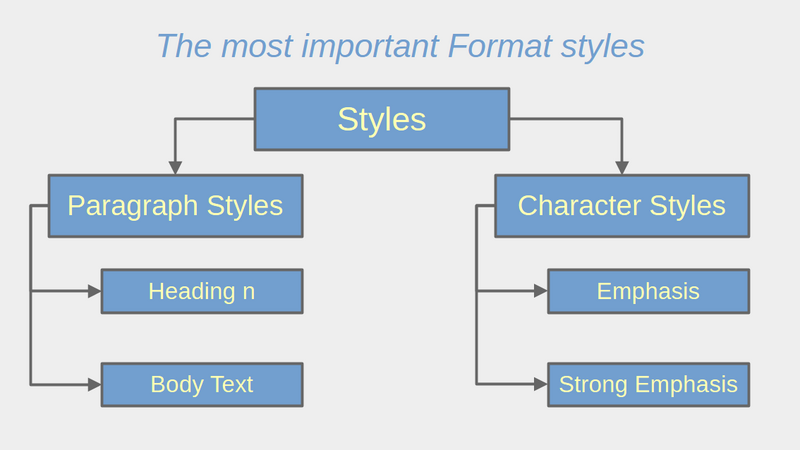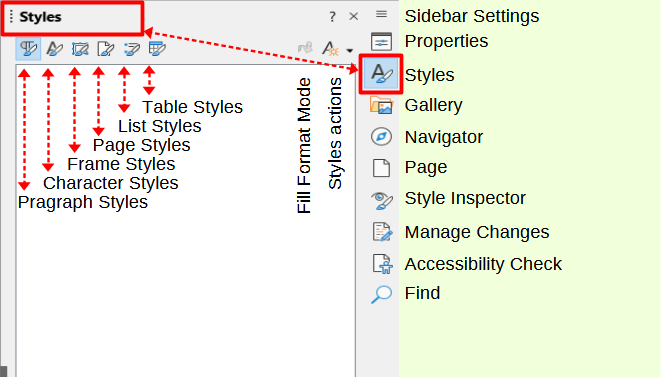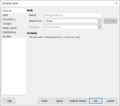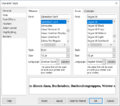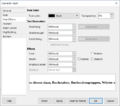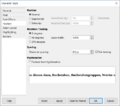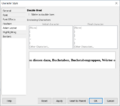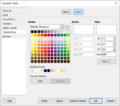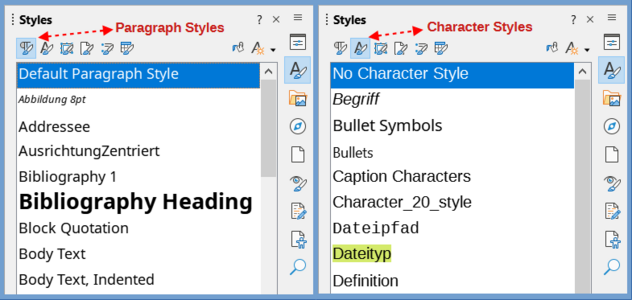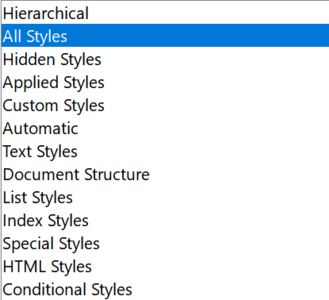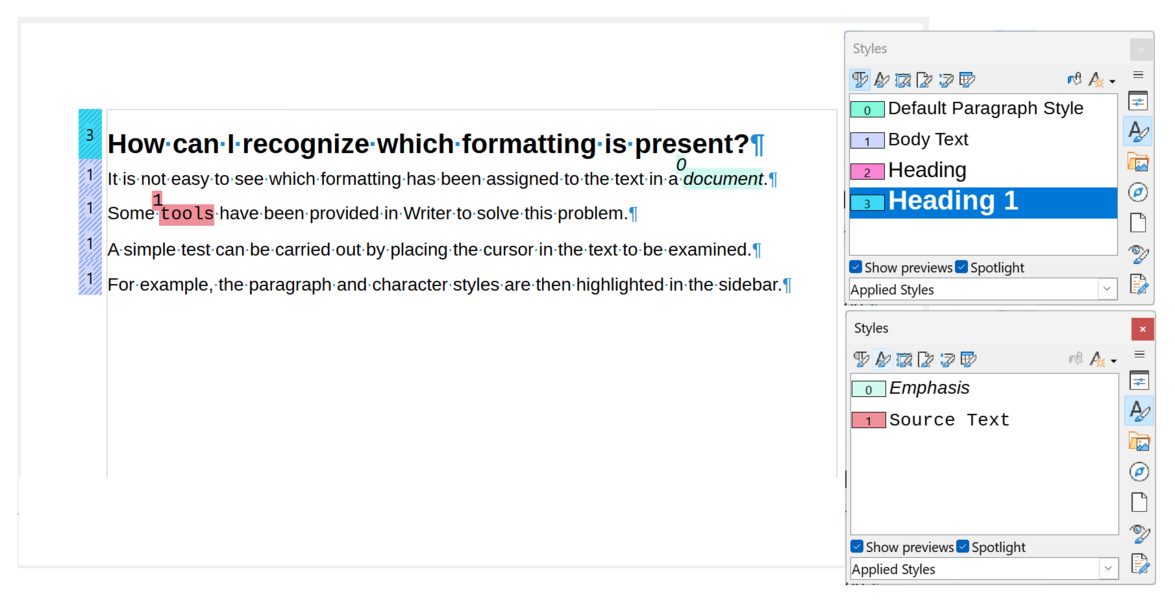Videos/Professional work in Writer
TDF LibreOffice Document Liberation Project Community Blogs Weblate Nextcloud Redmine Ask LibreOffice Donate
This page is in work!
Foreword
The video shows an introduction on how to "Work professionally in Writer in LibreOffice" and links to this page here, which provides further information and details. This description is not intended to be a step-by-step guide. It is intended to show the interaction of the important tools in Writer in order to make it possible to work as professionally as possible. This wiki page is of course only a short introduction to help you get started with Writer. For more information, read the manuals of the LibreOffice community.
Link to the Video
Link to the Video (in German [DE]): Einstieg zur professionelle Textgestaltung in Writer – LibreOffice
Formatting types
Direct (hard) formatting
There is the formatting that is mainly done using the Formatting toolbar icons, the sidebar at "Properties" - "Character Styles" and "Paragraph Styles" or using the menu ▸ or ▸ . This is called direct (hard) formatting.
For simple and short documents, it is usually enough to format what is written directly.
This is the modification of text or other objects, such as frames or tables, by assigning various properties, such as "Bold", "Italic" or "Spacing" and "Font sizes".
These formattings are done via the "Formattings" toolbar or via the sidebar ( Ctrl + F5 ) at "Properties".
![]() This type of formatting is strongly not recommended for large documents, such as novels, long letters, documentation, or the like.
This type of formatting is strongly not recommended for large documents, such as novels, long letters, documentation, or the like.
Delete Direct Formatting
You can remove direct formatting from your document by selecting all the text ( menu ▸ , Ctrl + A ) and then choosing ▸ , ( Ctrl + M ) from the menu.
Indirect (soft) formatting
An important second way, is the indirect (soft) formatting with styles. These are located in the sidebar at "Styles", in the toolbar "Formatting" on the far left as "Set paragraph style" or in the menu as a selection. Indirect formatting is not applied directly to the text, but is specified in the styles. The big advantage is that when you change a style, you change all the objects (such as paragraphs, borders, and so on) to which you have assigned that style. To create good documents and work as quickly as possible, you should take enough time to create the necessary styles. These are, for example, Paragraph styles for Headings and Bodytext paragraphs. See also: Advantages of styles in Writer.
What does professional work mean here?
The meaning here lies in the use of the tools provided by Writer. These tools are basically the Styles. A good analysis of the advantages of Styles vs. Direct Formatting can be found in this answer.
-
The most important Styles
The meaning of Styles
Using Styles means that you do not apply the formatting to the text, but define it in the Styles and then assign it to the text. In a Style/Paragraph Style, you can adapt several properties to your needs at the same time. For example, font, font size and color and much more. It is a whole package of properties. This allows you to assign many properties to a paragraph at once. You can use and assign the paragraph Styles as often as you like. With the help of Style, documents are quickly brought into the best possible form, giving you good-looking documents. All paragraphs that you provide with Styles adopt the properties defined in the paragraph Style. At a later stage, you remember that you want to change the text color. Then change the text color in the assigned Paragraph Style and all assigned paragraphs will immediately adopt the new color.
-
Styles and others in the sidebar
Paragraph Styles
See also: What is a paragraph?
Paragraph Styles, as the name suggests, are applied to paragraphs in text. In a Paragraph Style, as an example "Body Text", they set, or take over, the properties. These are the font, font effects, alignment, indents and spacing and some other properties. If you want to explore the properties of a Paragraph Style, right-click on the Paragraph Style "Body Text" in the sidebar at "Styles/Paragraph Styles" and choose . You will find in a Paragraph Style there 17 tabs where you can explore the properties.
-
General tab
-
Font tab
-
Font Effects tab
-
Texgt flow tab
-
Alignment
-
Indents & Spacing tab
-
Position tab
-
Drop caps tab
-
Highlighting tab
-
Area tab
-
Transparency tab
-
Borders tab
-
Tabs tab
-
Outline & List tab
-
Condition tab
-
Asian Typography tab
-
Asian Layout tab
Character Styles
Character Styles are used to format letters, groups of letters, words or paragraph parts differently than specified by the Paragraph Style. For example, the Character Style "Strong Emphasis" (bold), is used to display the formatting in bold. Again, you can look up what properties are associated with a Character Style. Right-click on the "Strong Emphasis" Character Style and choose . There are six tabs: "General", "Font", "Font Effects", "Position", "Highlighting", and "Borders".
-
General tab
-
Font tab
-
Font Effects tab
-
Position tab
-
Asian Layout tab
-
Highlighting tab
-
Borders tab
The Meaning of the styles you want to apply is entirely up to you. You can determine your ideas about how your document should look with the use of styles. A very important appearance is created by the selected font and font size, for example, of the Bodytext. So think beforehand how you want your document to look and set up the styles accordingly.
Unformatted text
The basis when writing should initially be unformatted text or, for example, the paragraph style should be assigned to "Body Text". When copying blocks of text from other sources, be sure to paste the text into Writer unformatted. You can do this using the ▸ ▸ menu, ( Ctrl + Alt + ⇧ Shift + V ). If the paragraph style "Body Text" prevails in the document for the paragraphs, an unformatted text inserted there will take over the "Body Text" paragraph style. See also Writer Manual Chapters 3 and 4 - Text].
The most important styles
The styles can be found in the sidebar. If the sidebar is not visible, select the ▸ menu ( Ctrl + F5 ). In the sidebar under styles, you will find the ones that are important for text formatting:
- Paragraph Styles are applied to paragraphs in the text. See also: What is a paragraph?
- Character Styles are applied to individual characters, words, or parts of text.
-
Paragraph and Character Styles in the Sidebar
To format the unformatted text you create as quickly as possible to make it easy to read, use paragraph and character styles. LibreOffice already comes with paragraph and character styles for the most common use cases. These are, for example, the paragraph styles "Body Text" and "Heading n" and the character styles "Emphasis" and "Strong Emphasis", for italics and bold. You can also customize the existing styles. Or create styles for your own purposes (Create your own styles) or modify existing styles.
If you want to recognize the styles hirarchy, select Hirarchical there.
-
Paragraph styles view in the sidebar below
Derive your own styles from the standard ones or modify existing ones.
Create your own styles
As an example, open the "Styles" sidebar and click on the "Paragraph Styles" icon. Rightclick on the "Default Paragraph Style" and choose Click on the "General" tab. Enter a name for the new paragraph style there. If you want to write several paragraphs in a row with this paragraph style, enter the same name as "Next style". Otherwise, think about which paragraph style should follow. Change the desired settings in the other tabs and click .
Assigning styles to text
Styles are paragraph styles, character styles and others. To assign styles to the text, select the corresponding text or place the cursor there. Now doubleclick the desired style. For paragraph styles, it is sufficient to place the cursor in the desired text before doubleclicking in the paragraph, so that the cursor flashes within this text. For character styles, you must select the desired text before doubleclicking on the character style, such as a group of letters, a word, a part of a sentence. See the Writer manual Chapters 8 and 9 - Styles.
Removing character styles from the text
To remove character styles assigned in the text, select the text you want to handle. And doubleclick on the character style "No Character Style".
Changing the character style of a text
To change assigned character styles for a text, select the text you want to change. And doubleclick on another desired character style.
To change the paragraph style of a paragraph
To change assigned paragraph styles for a paragraph, place the cursor in the desired paragraph you want to change. Double-click on the other desired paragraph style.
Advantages of styles in Writer
With the help of styles you can quickly create good looking documents. Since in one style /paragraph style you can adjust several properties at the same time for your needs. For example, font type, size and color and many others. When you apply styles to all paragraphs, you apply the properties set in the paragraph style. Now, at a later time, you remember that you want to change the text color. Then you change the text color in the assigned paragraph style and all paragraphs immediately adopt the new color.
How can I recognize which formatting is present?
It is not easy to see which formatting has been assigned to the text in a document. Some tools have been provided in Writer to solve this problem.
A simple test
A simple test can be carried out by placing the cursor in the text to be examined. For example, the Paragraph and Character Styles are then highlighted in the sidebar.
The Style Inspector
You will also find the Style Inspector in the sidebar. If you click on the Style Inspector, Styles and formatting are displayed.
The Spotlight
Another option is to switch on "Spotlight" at the bottom of the sidebar for the Paragraph and Character Styles. This can be done separately for Paragraph and Character Styles. If you have ticked the "Spotlight", all Styles in the sidebar will be highlighted in color with an assigned number. The number can change depending on the Styles view. In the text itself, these colored markers are displayed in the left margin or in the text according to the Styles and also direct formatting.
-
Example: Spotlight
Create Document Template
That is, prepare a document (this can be a blank page) in which you create all the required styles if possible. A document template should also include all the desired specifications, such as the date. In other words, everything you need every time but don't want to write every time. Then save your document as a Document Template and give it a catchy name. The Document Template with the styles you have created, you can now open again and again via the menu ▸ ▸ for new documents and assign the styles for your text there. See also the manual Chapter 10 - Document Templates. Remember to save your new document template.
Some question and answers
Mix direct formatting and styles?
Right off the bat, don't do it. Some people talk about formatting hell in this case. You can't tell from the text whether it was formatted "soft" or "hard". If you now want to change something there is of course always the danger that a formatting was used, which stands over the formatting style desired by you, see Does the upper sting the lower?. Formatting with Styles enables you to achieve a very high quality in your documents, provided that you always save your documents in ODF - Format.
Which style is assigned to the text?
To see which style is assigned to the text, place the cursor in the text to be examined. In the sidebar at "Styles" select "Paragraph Styles" or "Character Styles" to see which style is selected and thus assigned. Or select "Style Inspector" in the sidebar for a more detailed view.
What does the "Style Inspector" do?
The sidebar contains a butoon for "Style Inspector". If you place the cursor anywhere in the text, the "Style Inspector" will show you what formatting has been done at that location. Or look in the "Formatting" toolbar on the far left in the "Set Paragraph Style" field.
Does the upper sting the lower?
The sentence "Upper trumps lower", is known from playing cards. Here it means, which formatting has which priority:
- Text of a paragraph style can be formatted differently by a character style.
- Text of a paragraph style and/or character style can be formatted differently by the direct formatting.
Conversely, it means:
- Paragraph style cannot format text differently that has been handled by a character style or direct formatting.
- Similarly, a character style cannot format text that has been treated with direct formatting.
Order, which formatting is above which?
- Direct formatting (above)
- Character styles
- Paragraph styles (bottom)
What is a Paragraph?
See also: Paragraph Styles A paragraph is always created when the ↵ Enter key is pressed while writing in the word processor. The end of the paragraph is represented by the character ¶ ("pilcrow" = translated "mushroom head"). The end of a paragraph is also the beginning of a new paragraph. If the formatting characters are not visible, click on the symbol (Pilcrow) "Toggle Formatting Marks" ( Ctrl + F10 ) in the "Standard" toolbar. So a paragraph (text) is delimited by a pilcrow at the beginning and at the end. When you open Writer with an empty document, the first thing you see is a pilcrow, which is the end character of a paragraph. A heading is also just a paragraph. So, for example, if you see a pilcrow at the end of the line above a heading and at the end of the heading, that heading in a line represents its own paragraph.
Further Informations
ODF - Format
ODF is an open file format for word processing documents, spreadsheets, presentations and graphics and using ZIP-compressed XML files.
Read A ODF blog series by Italo Vignoli on LibreOffice-Blog.
| ODF - File formats in LibreOffice |
| Komponente | Dateiformat | Funktion |
|---|---|---|
| Writer | ODT | Word processor |
| Calc | ODS | Spreadsheet |
| Impress | ODP | Presentations |
| Draw | ODG | Diagrams |
| Math | ODF | Formula Editor |
| Base | ODB | Database |
Where can I find good documents for inspiration?
Samples for good documents are the manuals of LibreOffice English documentation
Save newly created documents
Always save documents created in Writer in OD-Format (ODT) format. See also: How do I open files from MS-Office 2007 or 2010 (.DOCX, .XLSX, ...)?
The interpretation of a paragraph
Another aspect is the interpretation of a paragraph. Take a very simple book, e.g. a detective novel. This is mostly divided into paragraphs. So what should a paragraph contain? One describes a certain situation or a certain thought or a highlight. When this thought ends or branches out, it usually makes sense to start a new paragraph. But this interpretation of a paragraph has nothing to do with LibreOffice. It is one of the main tasks of every author to think about it and make determinations.
Used files
Bauernbrot_DF.odt File is directly formatted
Bauernbrot_FF.odt File is formatted with styles
Die wichtigsten Formatvorlagen DE.png Chart Styles
Documentation / Manuals
Here you will find the Documentation / Manuals: Documentation / Manuals
Any questions?
For questions on this topic go to: Ask.LibreOffice
Get Involved
Join us today and help us to make it even better! Get Involved
Donate
LibreOffice is Free Software and is made available free of charge. Your donation, which is purely optional, supports our worldwide community. If you like the software, please consider a Donation.
